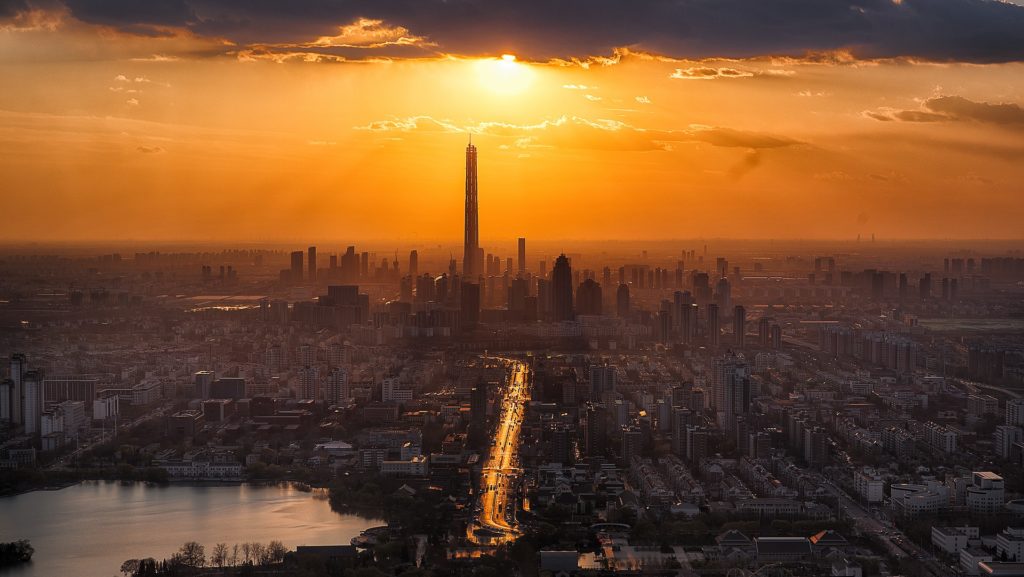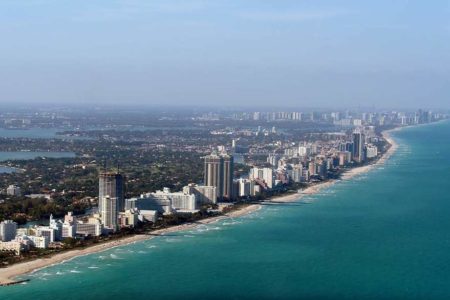
Image credit: Pixabay
Historians spend a great deal of time on the subject of cities. Rome, Athens, Constantinople, London, Tokyo, Cairo, New York and Moscow. It is as if the stuff that is most worthwhile is the density of the population, those locations where people lived closely packed together rather than the substance of the people who lived everywhere in between. It would appear that all the significant events and accomplishments of a people throughout history are focused on urban centers and as a result we have convinced ourselves that it is and has always been the cities that define a society.
Our perception of urban living versus rural is often defined by the culture shapers — politicians, academics, corporations and media. Rarely are the populations who inhabit the different regions asked about the impact of those decisions on their quality of life. They accept the paradigm into which they were born or they convince themselves that the alternatives are much worse than what they face living in densely populated urban centers.
We seem to readily accept that economic advantages of living in a city far outstrip the opportunities of living in the country, that the benefits of culture — museums and symphonies, for example — are unavailable to anyone who does not live where these attractions are located. There is an almost equal enthusiasm for certain benefits of urbanity, like diversity, that manifest as many, if not more drawbacks to a good life depending on how the effects of that mix manifests itself in good times and in bad. What one gains in access to a varied selection of cuisines is offset by what one must deal with when communication between diverse groups is not possible due to language or cultural differences. While the former are often cited as beneficial, the latter is never mentioned except where it can be used to shame or ridicule anyone who objects. Under social and economic stresses those features such as clannish or tribal behaviors emerge and create fractures along a number of fault lines.
In reviewing the challenges of a stressed and divided society like America in the 21st century, we must consider which behaviors and choices bear the greatest responsibility for those problems. While experts most often point the finger at those who are resistant to change, as if change itself is always beneficial and stasis is always a negative, it doesn’t mean that they are correct in their estimation. While it is difficult to prove that there is a net benefit to de-urbanization, it is very easy to prove that there are far more negatives associated with increased urbanization.
Let’s start with a few basic facts concerning the variables between the two.
According to the US Census nearly two-thirds of Americans live in an urban environment. That area represents less than one fiftieth of the inhabitable land available for habitation and when we look at the numbers, it becomes far more stark. The population of large cities with over one million inhabitants is over 7,000 per square mile, while in rural areas that figure drops to 35.
200:1 is a variable that presents quite a few challenges, most of which are environmental.
Everyone who has ever visited or seen a CAFO where livestock are kept prior to slaughter for fattening can tell you that the single most recognizable factor is the waste. In rural areas where a single family inhabits the same amount of space that would fit 150 inhabitants in a city, there is adequate drainage and soil to accommodate their waste with little or no effect on the environment. In a city there exists no spare land to accommodate any waste disposal and so virtually all excess waste must be treated at an extremely high cost with an even greater amount of material that must be relocated away from the urban source. This goes for solid wastes as well as human waste. Urbanized setting cannot dispose of their detritus without reliance on rural areas to distribute those accumulated wastes. Because of the volume produced, there is virtually little chance of any of that being dealt with organically, i.e. allowing for nature to metabolize the wastes, rather they must be buried in landfills creating huge toxic storage issues that will take centuries rather than days to dissipate.
Cities likewise are incapable of producing even a fraction of what they consume. Urban farming accounts for at best 5% of their total needs making them dependent upon their rural counterparts for 95% of their nutritional requirements. Cities, quite simply, cannot feed themselves nor dispose of their own waste while rural areas have close to zero dependence on urban enclaves for either of the two.
Rural areas of the United States of America enjoy a much higher quality of life than urbanized area by a large margin. Crime rates are three times higher in cities, while tax rates are doubled. The income necessary to maintain a standard of living in a city is 35% higher than someone living in a rural area. In terms of pure economics whatever advantage higher salaries provide to urban dwellers, it is offset by a factor of almost 3 to 1 and this is based only on six raw data points; energy, housing, food, medical care, taxes, and public services. It fails to take into account the radical differences in what urban people must spend on additional factors associated with urban dwelling, like additional security, fees, and medications (urbanites have a 40% higher incidence of anxiety and psychological issues than their rural counterparts as well as an STD rate over five times higher.
Overall the quality of life for rural inhabitants scores fifty percent higher than those who live in the city. While none of these are definitive proof that rural life is objectively better — there are people who thrive in high anxiety, isolation and close proximity to strangers at a higher cost, most human beings seem inclined to live in a peaceful setting with higher ratio of income to expenditures. Proponents of urban living will often point to areas that rural environments do not possess, such as public transportation, diversity (higher percentage of non-natives), and cultural institutions, they do not factor in the costs as opposed to their uses. For example people will tout the fact that the NYC Metropolitan Opera features a valuable resource for those who live in NYC. The truth is that with their 3,800 seat capacity and 200 performance season, less than 1 in 15 New Yorkers would ever have the chance to attend a single performance even if they wanted to, far less when you subtract season ticket holders and out of town ticket buyers. Just because a resource exists in an area does not mean that it will ever be utilized except by a small fraction of the urban population. And in no way are those from the rural regions unable to travel into the city for expressly those purposes, so such claims of urban advantage are specious at best.
It should also be noted that there are significant demographic aberrations in urban versus rural areas, especially in regards to age.Urban populations are much younger than rural ones and skewed to the advantage of younger females. Anyone who has ever made it to adulthood understands what draws young men to a specific place and that is available young females. As old courtship rights were eroded over the last century, especially in regards to the rise of feminism, and loosened standards in terms of sexual availability cities have acted as a magnet for unattached men and women. Similarly the numbers of in tact families is equally skewed with far more living in rural areas than their equal aged cohort in the city. Urban divorce rates are twice that of the country and people who live in the country are ten times as likely to live with a multi-generational extended family than in a city. In addition the number of newly arrived immigrants found in cities dwarves the number located in the countryside as well as second and third generation immigrants. To find someone who speaks the same language, shares the same values, and believes in the same principles you are far more likely to encounter them the further you move from the cities. There are few other considerations that show any of the correlating demographic idiosyncrasies than those demonstrated by the urban/rural divide.
Of course we can try to do what most economists would do in looking at this issue and most of them would point to the productivity and dollar value of each particular region. Cities, they will say, create more dollars per square foot than the rest of the country combined, but they never mention the difference between the source of those dollars. The country produces the ores that become raw materials to fulfill the demands of industry, they produce the overwhelming majority of sustenance, they produce the majority the energy that propels the engine of the economy and the vast majority of the tradesmen that build and maintain the infrastructure. Cities produce an overwhelming majority of those on various kinds of relief, government employees, attorneys and those who work in the financial service sector, none of which create anything of tangible value. One cannot survive long without nourishment but no lives are dependent on notional trading of derivatives or arcane regulations regarding tort law. Cities are the centers of specialization while the countryside is the seedbed of the generalist. Those who live in the city are five times more likely to call a plumber, electrician or tradesmen to perform basic tasks than a rural resident. The majority of all US Patents are held by someone who was born and raised in a rural environment and most of the greatest developments of the past two hundred years were the result of people reared on farms; Whitney, Deere, Bell, Edison, Ford, Browning, Eastman, Farnsworth and Howe are but a fraction of the names of those whose roots and generalist approach to life allowed them to create innovative and groundbreaking technologies, while most of what takes place in the cities is a form of refinement of those creations. Specialists have their place, especially in areas like surgery and engineering, but the origin of their fields always have their roots in the soil.
Human beings possess an innate and powerful drive towards concern for their fellow man. In the country if some sees an accident or a fire the first impulse is always to stop and render aid. It is a rare time when someone in need is ignored in a rural community. In the streets of most major cities the population has inured itself to the sight of human suffering and want. They step over the homeless, pretend they don’t notice the piles of human waste or puddles of urine, blithely stare off into space when someone exhibits signs of mental illness or emotional instability and walk away from random acts of violence. The internet is full of videos of beatdowns, assaults, meltdowns in public places, destruction of businesses, flash mobs and every other form of delinquency but only rarely do these occur in rural settings. It is the desensitized population that makes most of these acts possible despite the fact that the perpetrators are almost always far outnumbered by passerby. Their ability to compartmentalize the vast numbers of human interactions they have every day leaves them numb to their genetic predisposition towards altruism and empathy. People who lack empathy and concern for their fellow human beings cannot be expected to make decisions that would benefit anyone other than themselves. Part of the demographic slant in elections — the majority of Democratic voters live in urban areas while the majority of Republican voters live in rural areas with income, sex and age playing a distant second, third and fourth in terms of political affiliation. Interestingly enough the more dependent upon others someone is, the more likely they are to live in a city, thus the need to vote for increasing government involvement in their lives.
There are certainly more areas where the distinctions between the urban and the rural can be observed, but perhaps none more important than the disconnect between human beings and their natural environment. Human beings were adapted to live in accordance with the seasons and the environment in which they lived. The very advance of human civilization rested almost entirely upon his ability to create surplus food stores in order to survive in year round settlements. These centers became the hub of both agriculture and the domestication of animal species and from that came every conceivable advance and achievement we have ever made since then. The development of mathematics, written language, metallurgy, construction, engineering, medicine, all of them were a direct result of living in tune with the observable world of nature. Urban living divorces human populations of everything from the source of their daily nourishment to the elimination of their wastes. They turn on their lights without knowing where the source of that energy comes from, running in the rivers or buried in the coal seams of some distant wooded hillbillyville, they turn on their tap for their water unaware of its origins in the distant mountains of flyover country.
They are as dependent as babies on the material resources of the places they make fun of, incapable of feeding themselves or of cleaning up their own mess. They make more waste, use more resources, produce fewer necessities, consume more luxuries, have greater disparities between the economic classes, fewer intact families, experience far more crime and pay a higher price to adjudicate it, then ship off their offenders to prisons in the hinterlands where the rubes are hired as custodians to the human effluent of the cities. You can hear sirens 24/7 but you cannot see the stars at night. There is no such thing as silence, privacy is almost nil, personal space is reduced, self-reliance almost unknown. In most cities you do not have the right to arm yourself for defense against the criminal population that far exceeds that of the rural regions. Virtually every transaction in the city is economic with very few people doing business outside of their own very small circles. For all of their cosmopolitan posturing their social circles are 30% smaller than the average inhabitant of a town with 2,000 or fewer inhabitants. They are, in fact, the most provincial of peoples despite living in the most crowded environments.
I have lived in a multitude of places over the course of my life and have seen far more of the United States than the most seasoned travelers. I’ve lived in the center of the largest metropolis on the east coast and now choose to live in a New England village with a seasonal population that never exceeds 2,500 residents in an area twice the size of Manhattan. Our choice to live this way was predicated not upon an economic necessity, nor on an historic attachment to place, but rather as a deliberate choice based on what we wanted to best experience a better way of life. Our economic standard dropped significantly but so did our expenditures. Our physical health improved markedly, our relationships with each other and our children has been greatly enhanced, and our connection to those who live around us, friends, neighbors and the community at large has been nothing short of miraculous. Peace is plentiful, crime is not a concern, freedom to do what we want when we want to has increased and we feel like we have lost nothing in the exchange. Try as I might there are only a few things I can think of as being a loss to us; a good pizza, variety of restaurants, and the friends and family we left behind. Beyond that there is nothing I can think of worth noting and under no circumstance would we ever consider moving back.
The historians rarely concern themselves with life in the provinces, where the toil and sweat of the creator classes accumulated the surpluses that allowed cities to exist in the first place, to flourish and become the centers of civilization we think of today. Paris, Berlin, Los Angeles, Bangkok, Shanghai and Baghdad. They focus on the remnants of collapsed citadels, shrines and fortresses. Those places that served both to celebrate the accomplishments of the nations and principalities that gave birth to them, and their glory are all ruins today. As much as they were lighthouses to the young and the ambitious of each generation, so too were they the fire that drew attention from afar. Eventually the complex business of moving paper and money, of accumulating wealth and building shrines to their hubris always runs its eventual course. And as the lines of supply are cut off, either through inattention or rebellion, the dependent urban centers begin to feed on themselves, leaving them vulnerable to the predations of those who hunger for a taste of their flesh. And all that endures and comes to life amongst the derelict bones of an extinct metropolis are the sons and daughters of those who preserved their independence and traditions in the far flung country of the rural world.
Nothing lasts forever and the accelerating pace of domestic instability demonstrates just how fragile our social fabric is. As we enter the maelstrom of the Fourth Turning anything can happen. The Empire and its narrative struggle to maintain legitimacy in a time of universal corruption. All declines follow a similar path and once the collapse occurs events pick up speed leaving everyone who has failed to prepare caught unaware. The cities are the least secure location during such periods and only those who manage to find a place out of the reach of those who tear down the walls of our civilization will be safe.
Take everything into consideration, but prepare for anything. Your life may depend upon it.






Kristy
Excellent article. I grew up in the country (community of around 300 people) and I now live in a rapidly growing suburb of the DFW metroplex. I know exactly what the author is saying from experience. While I have never lived in one of the “great cities,” I don’t have any desire to. I don’t even really have any desire to visit them. I would much rather visit the countryside of any state or country where the people are less self-absorbed and actually know how to live rather than how to be dependant on the state or others.
AFCz
Then of course there are all of the former urbanites that are abandoning the cities for the rural life by building McMansions with insatiable water demand on smaller fragments of land, driving land prices to raises the cost of living for the rural populations whom have no idea, even if they did know they would reject the rest of what it means to live in the country (favoring liberty) while they continue their urban obsession with equality. Then as these urbanites increase in number they import their bureaucracies and regulations. Just maybe if you object to deer hunting, the rural life is not for you.